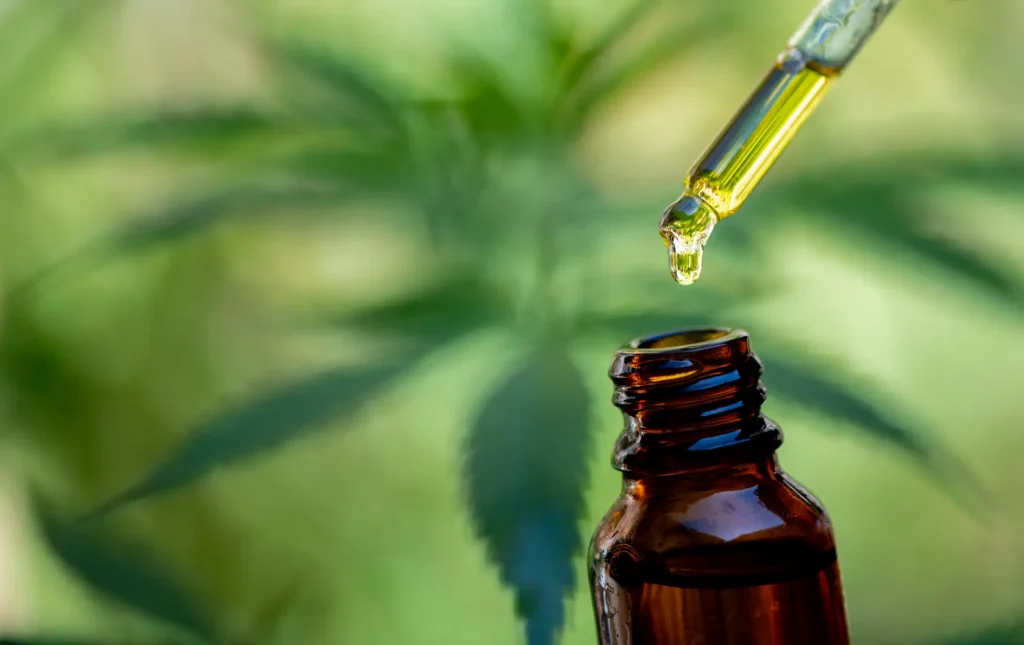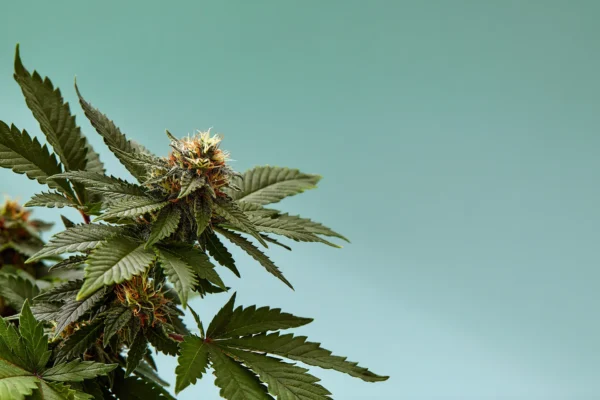Opioid Use Disorder (OUD) is a major global health challenge, defined by relentless cycles of compulsive drug use, periods of abstinence, and high rates of relapse. With approximately 75% of individuals returning to drug use within the first year of treatment, new strategies are urgently needed to address the opioid crisis.
Current treatments, such as opioid agonist substitution therapies, face challenges due to their own opioid related effects. This urgent need has directed research towards non-opioid medications that can target drug craving and relapse without carrying addiction liability.
Cannabidiol and Opioid Use Disorder
Cannabidiol (CBD) is a non-intoxicating cannabinoid derived from the cannabis plant. Previous work has demonstrated that CBD may attenuate craving and anxiety induced by drug-associated cues in abstinent individuals with heroin use disorder. It has also been shown to reduce cue-induced heroin seeking in animal models. Until recently, the precise mechanisms in the brain responsible for these effects remained a mystery.
However, the neurobiological underpinnings of these effects remain unclear. Therefore, in a recent study, published in Biological Psychiatry, aimed to uncover the molecular signatures behind CBD’s apparent effects to reduce heroin-seeking behaviours in rats.
How Was the Study Conducted?
Researchers focused on the Nucleus Accumbens (NAc), a key region in the brain central to processing information and cues that drive drug seeking behaviour.
The NAc is not a single entity; it is composed of two distinct subregions: the NAc Core (NACC) and the NAc Shell (NACS). These subregions play complex and distinct roles in regulating drug seeking. Historically, the Core was thought to handle discrete cue-induced seeking, while the Shell handled context-induced seeking, though newer evidence shows the Shell is also highly involved in cue-induced seeking following abstinence.
To investigate the effects of CBD, the researchers leveraged a robust, preclinical translational model:
- Self-Administration: Male rats were trained over 15 days to actively press a lever to self-administer heroin, successfully establishing a preference for the heroin-paired lever.
- Forced Abstinence: The rats then underwent a 14-day period of forced abstinence.
- Seeking Session: Prior to the seeking session, the heroin-experienced rats were administered either a vehicle (placebo) or one of two doses of CBD (5 mg/kg or 10 mg/kg). The seeking session itself involved placing the animals back into the familiar drug context where pressing the lever only resulted in the drug-associated cue (e.g., a light) but no heroin.
Heroin’s Molecular Impact: Subregional Specificity
The researchers then performed RNA-sequencing (looking at gene expression, or “transcriptomic profiling”) on the NACC and NACS tissue after the seeking session to see exactly what molecular changes heroin had induced and what CBD had modulated.
Key Findings of the Study
CBD attenuates cue-induced heroin seeking
Training Phase
Heroin-trained rats reliably discriminated between the active and inactive levers, while the saline control rats did not.
There were no significant differences between heroin-trained groups, indicating that CBD administration did not affect learning over lever discrimination before testing.
Drug-Seeking Session
Heroin-experienced rats showed robust responding on the active lever compared to saline controls.
CBD dose-dependently reliably reduced cue-induced heroin seeking, with the higher dose fully normalising drug-seeking.
Heroin-vehicle rats also pressed more on the inactive lever compared to saline controls – an effect not observed in the CBD groups. This suggests CBD specifically reduced heroin-associated drug seeking rather than causing a general suppression of behaviour or motor activity.
Transcriptomic profiling in the NAcC and NAcS
Heroin experience generated a widespread change in molecular activity (perturbations) in the NAc, affecting shared biological functions related to synaptic regulation, lipid metabolism, and epigenetic signalling in both the Core and the Shell.
However, the impact was far more robust and widespread in the NAc Shell compared to the NAc Core. The NACS transcriptome was drastically altered, with over 4,000 genes affected.
This marked subregional specificity underscores the importance of studying these NAc subregions separately to fully understand the neurobiology of OUD.
CBD’s Effect on the Brain’s Scaffolding
When analysing the effects of CBD, the researchers found that it had a minimal impact on the heroin-induced changes in the NACC. In stark contrast, CBD effectively normalised distinct subsets of gene networks in the NACS that were directly associated with heroin-seeking behaviour.
The systems normalised by CBD offer novel biological targets and provide a working hypothesis for its anti-relapse actions:
- Extracellular Matrix (ECM) Integrity: CBD reversed heroin-related gene alterations associated with the Extracellular Matrix—the molecular scaffolding surrounding brain cells. Opioids are known to disrupt the ECM, which can interfere with synaptic connectivity and drive relapse. CBD appears to restore this critical structural component.
- Astrocyte Function: CBD normalised the expression of genes critical for astrocyte function (brain support cells), including genes like Gfap (glial fibrillary acidic protein), which is a key marker of neuroinflammation and often upregulated by heroin.
- Glutamate Homeostasis: CBD’s effect on astrocytes extended to regulating glutamate homeostasis by normalising the expression of key transporters (Slc1a2 and Gjbl). Heroin dysregulates this balance, leading to increased glutamate levels that can drive cue-induced seeking. CBD’s normalisation of these genes suggests it may help re-establish a healthy environment in the synapse, thereby reducing the drive to seek heroin.
In essence, the findings suggest that heroin disrupts the delicate interplay between the brain’s structural support systems (astrocytes/ECM) and neuroinflammatory processes, creating the environment for persistent seeking behaviour. CBD’s action appears to be to normalise these core systems, mitigating the molecular drive for relapse.
What This Means for the Future of OUD Treatment
This study provides a valuable novel biological foundation for understanding CBD’s potential in an animal study of OUD. It confirms CBD’s ability to attenuate cue-induced seeking and provides strong molecular evidence that this is tied to its action within the NAc Shell, specifically by correcting key gene networks related to the ECM and astrocyte function.
Novel Targets: Upstream regulators of these systems, which relate to inflammatory processes, may serve as novel targets for developing future anti-relapse strategies.
A Foundation for Development: While these are compelling preclinical findings, they were conducted on male rats under specific laboratory conditions. Further functional studies and clinical trials are required to confirm that these observed gene expression changes translate into therapeutic effects at the protein level and can be safely and effectively applied to humans.
This research, however, offers tremendous scientific momentum, highlighting the integrated perturbation of multiple systems—the ECM, astrocytes, synaptic plasticity, and neuroinflammation—as pathological signatures of addiction that CBD has the potential to modulate.
Disclaimer: This blog post is for informational purposes only and is based on a specific preclinical study conducted on male rats. It is not medical advice. The efficacy and safety of medical cannabis or its constituents for treating opioid use disorder in humans have not been fully established. Patients should always consult a qualified healthcare professional before making any decisions about their treatment.



